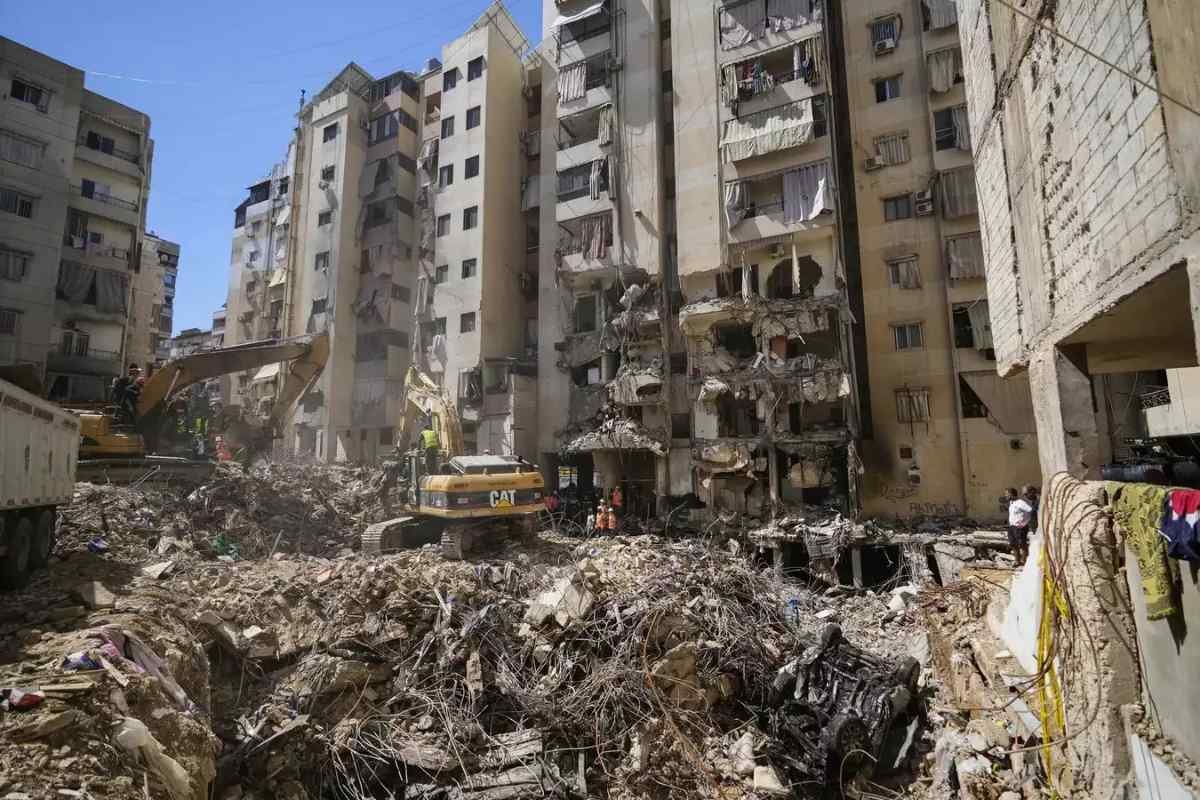[Source – economictimes.indiatimes.com]
Israeli strikes on Lebanon claimed the lives of more than 490 people on Monday, marking the deadliest escalation since the 2006 Israel-Hezbollah conflict, with Lebanese authorities confirming that the death toll includes over 90 women and children amid Israel’s widespread air campaign against Hezbollah. Thousands of Lebanese civilians, particularly from the southern regions, have fled their homes, seeking refuge in the capital, Beirut. This exodus has caused major traffic congestion on highways, particularly around the southern port city of Sidon, in what is being described as the largest mass displacement since 2006.
The Israeli strikes on Lebanon led to 492 reported deaths, including 35 children and 58 women among the casualties, while 1,645 individuals sustained injuries, compounding the nation’s grief after a devastating attack on communication infrastructure the previous week. The relentless bombardment has left the country in shock as it grapples with the sheer scale of destruction.
In a public address, Israeli Prime Minister Benjamin Netanyahu urged civilians in southern and eastern Lebanon to evacuate, stressing the importance of leaving danger zones ahead of further military actions. “Please get out of harm’s way now,” Netanyahu said, assuring citizens they could safely return once the operations conclude. Israel’s military spokesperson, Rear Adm. Daniel Hagari, echoed the prime minister’s warnings, emphasizing the urgency of removing Hezbollah forces from the Israel-Lebanon border.
Israeli Military Expands Operations Against Hezbollah
The Israeli Defense Forces (IDF) intensified their operations on Monday, carrying out airstrikes on 1,600 Hezbollah targets across Lebanon. According to Hagari, these strikes aimed to neutralize Hezbollah’s missile capabilities, including long- and short-range rockets, as well as attack drones. Many of the targeted sites were reportedly concealed in residential areas, with the IDF releasing images of weapons hidden inside private homes. Hagari accused Hezbollah of transforming southern Lebanon into a war zone, while Israeli airstrikes extended into the Bekaa Valley, a Hezbollah stronghold near Lebanon’s eastern border with Syria.
Israeli strikes on Lebanon, according to Hagari, inflicted substantial damage on Hezbollah’s military infrastructure; however, he did not disclose the timeline for Israel’s ongoing operations, as the Israeli military remains prepared for a ground invasion of Lebanon if necessary. “We are not looking for wars. We are looking to take down the threats,” Hagari stated, reinforcing Israel’s commitment to neutralizing Hezbollah’s offensive capabilities.
Hezbollah, a Shia Islamist militant group, has launched approximately 9,000 rockets and drones into Israel since October, including 250 on Monday alone, according to Israeli officials. Israel estimates that Hezbollah’s missile stockpile consists of around 150,000 projectiles, including precision-guided missiles capable of reaching targets throughout Israel. On Monday evening, Israel conducted a targeted airstrike in Beirut, which reportedly hit Hezbollah-controlled areas, injuring six people.
Lebanon Reels Under Humanitarian Crisis as Strikes Continue
The humanitarian impact of the ongoing conflict in Lebanon has become increasingly dire. Lebanese Health Minister Firass Abiad reported that airstrikes struck critical infrastructure, including hospitals, medical centers, and ambulances. The situation has led the Lebanese government to take emergency measures, including closing schools and universities nationwide. In response to the mounting displacement crisis, the government is preparing shelters for those forced to flee their homes.
Israel Strikes Lebanon As Hezbollah Launches Rocket Attacks | Vantage with Palki Sharma
Israeli strikes on Lebanon were reported in residential areas across southern Lebanon and as far as the eastern Bekaa Valley, where Hezbollah’s presence is deeply entrenched, with one strike even hitting a wooded area near Byblos, approximately 130 kilometers from the Israeli border, demonstrating the widespread nature of the military campaign.
As the conflict continues, Israel’s military chief, Lt. Gen. Herzi Halevi, has stated that Israel is preparing for the next phases of its operations against Hezbollah. These proactive airstrikes, according to Halevi, are intended to dismantle infrastructure that Hezbollah has built up over the past two decades. With tensions between Israel and Hezbollah escalating, the region faces an uncertain and potentially devastating future as both sides brace for the next chapter in this conflict.









